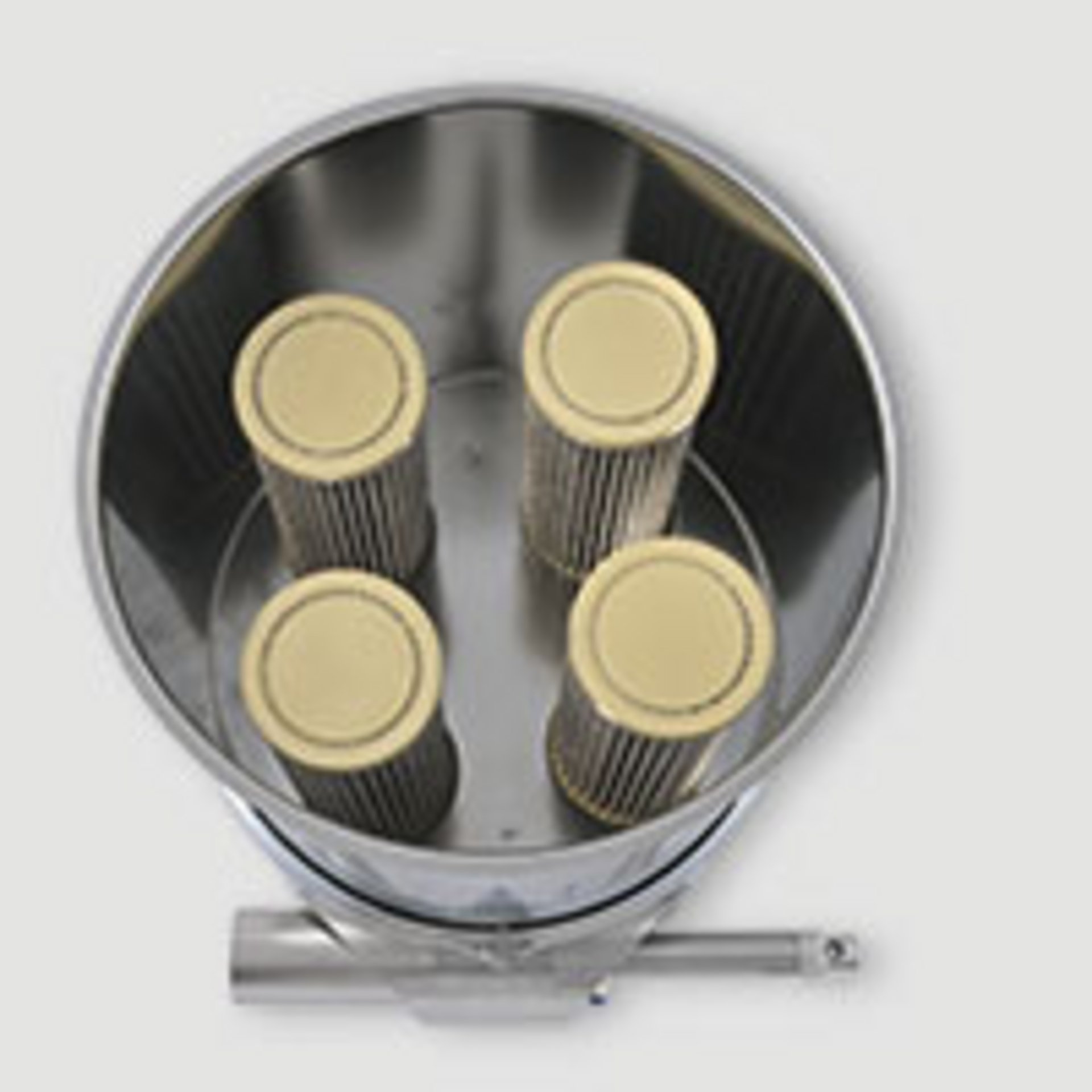32 - When is it necessary to purge material lines?

The point of purging is to remove or minimise transported material deposits from a material line.
When the vacuum of vacuum conveying systems shuts off after the conveying cycle, any remaining material in the line remains in the line and ideally is transported again during the next conveying cycle.
The crucial properties are the flow properties, i.e. whether it is free flowing or non-free flowing, pourable or fluidisable, adhesive or tends to form clumps. Additional criteria are the conveying distance, the conveying height that must be overcome, and the required bends. The necessary purity and hygiene requirements can also play an important role. Safety aspects such as explosion protection and the toxicity of the powder to be conveyed must be considered as well.
In regard to the material containers and hopper loaders, one must make sure that they do not have corners, angles, or square cross sections. Units designed for granulate must therefore be classified as critical, particularly for non-free flowing powders. If possible, the containers should be designed as a tapered cone (<60°, possibly asymmetrical). Large outlet diameters are also recommended. Suction boxes with narrow material paths should be avoided.
Depending on the flow properties of the powder, material bridges or material shafts can form. Some powders solidify if they are stored over longer periods of time. This can be counteracted with suitable built-in components as well as special aids for fluidisation, flow and discharge. Pneumatic discharge aids such as vibrating air vents, air injectors, ventilation air holes, or so-called air canons can also be retrofitted. Mechanical discharge aids such as vibrating cones, vibrating floors, or agitators, on the other hand, must be considered during the planning of the entire system.
Spiral conveyors and augers used as mechanical discharge devices are familiar from material dosing. Both methods make it possible to convey non-free flowing, adhesive or clump building powder over short distances. Spiral conveyors are, however, less suitable for free flowing powder.
If larger distances need to be bridged, then pneumatic conveying methods, such as pneumatic pressure conveying or pneumatic suction conveying, are possible solutions. Pneumatic pressure conveying is characterised by its large area or application regarding pressure (up to 6 bar), throughput, and distance, as well as with regards to powder properties. It is suitable for both continuous and discontinuous operation by enabling slow, gentle material conveying. In addition, pressure conveying allows for conveying states such as air conveying, strand conveying, or plug conveying.
Pneumatic suction conveying, in contrast, transports the material with air conveying, for which the air speed is normally over 20m/s. Non-free flowing powder should always be conveyed with purging, in order to prevent the pipes getting clogged. The supply of material occurs via cellular wheel pumps or discharge augers for non-free flowing powders, and via suction probes or suction boxes for free flowing powders.
When choosing the filter for the material loaders, the filter material, filter surface and filtration efficiency must be considered carefully. Filter and powder must be suited to each other, otherwise there is danger that the particles will permeate the filter or block the filter. The same considerations also apply for the central safety filter in front of the vacuum pump.
You need help with filters for a material loader? Click: www.motan.com
